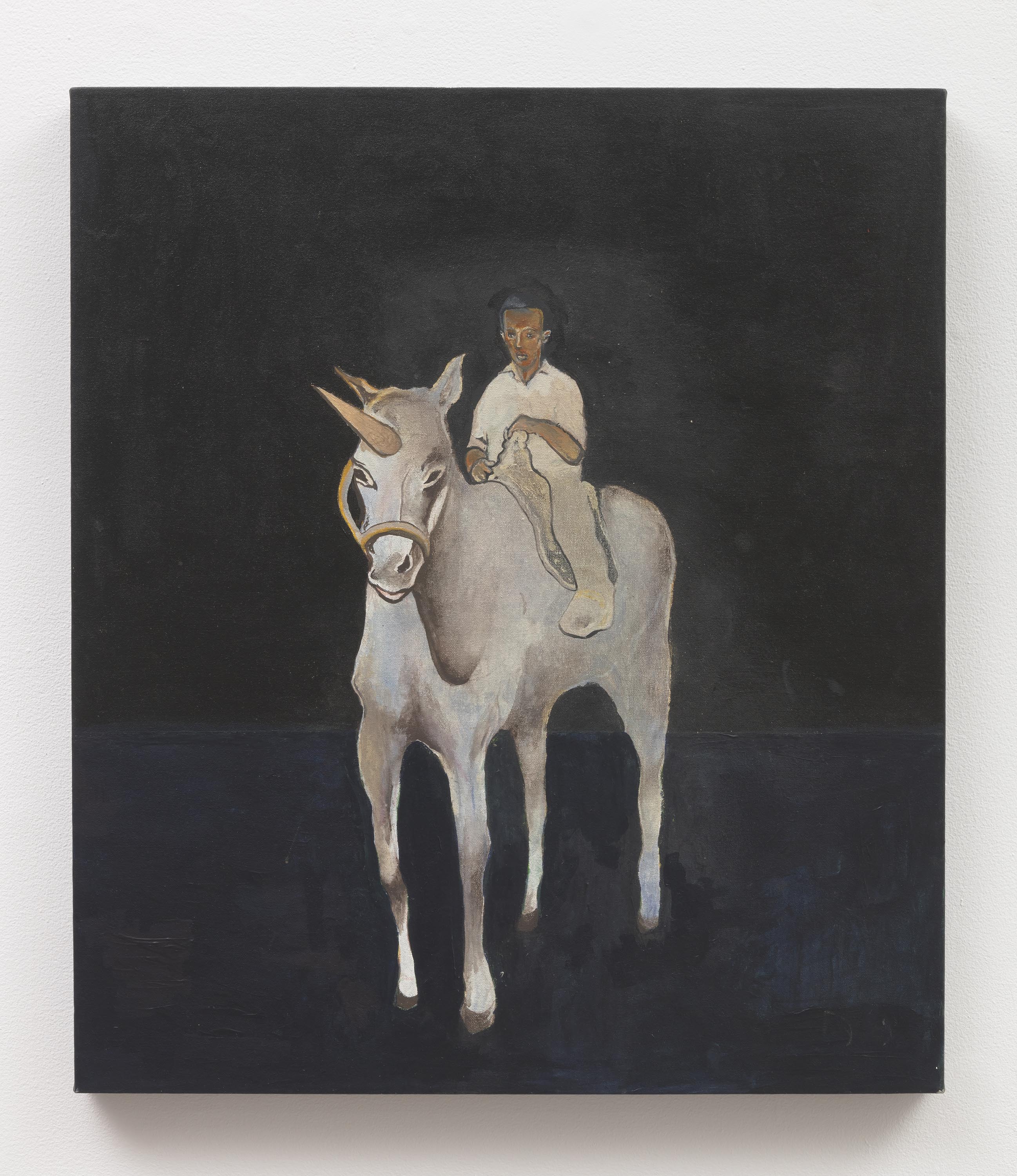


David Zwirner’s London Gallery is hosting a second iteration of the exhibition of work by the late Noah Davis that was held in New York last year. It would be fairly true to say that Davis is unknown in the UK, and it makes it all the more poignant to discover this extraordinary talent and simultaneously realise there will be no more work. Tragically, the artist died in 2015 of a rare form of cancer. He was just 32. Twenty paintings are installed over the ground and first floor galleries. On the top floor is an installation of his Underground Museum project.
The Underground Museum was founded by Noah Davis and his wife Karon in the working-class neighbourhood of Arlington Heights in Los Angeles. In three empty shopfronts, they installed copies of some of the great paintings from the Los Angeles County Museum of Art – determined to bring great art to this deprived community. The UM rapidly became a hub for artists, writers and others – including Davis’ brother Kahlil Joseph whose film BLKNWS was one of the stand-out works at the last Venice Biennale in 2019. The film is showing here in London, along with books and artefacts from the UM, embroidered chairs and personal papers.
Sugartown, 2011 is an astonishing painting. At close to two and a half metres tall, it creates a sense of physical space that you feel you could fall into. In the darkened space of the foreground, a figure lounges on pillows, a body all angles of knees and elbows, head thrown back, a suggestion of cigarette smoke curling across his face. The attitude is one of such complete repose, one imagines the heaviness of relaxed limbs, weighing down the bottom of the canvas. Behind him, red curtains stretch upwards in deep folds, shading the room from the brilliant sunshine of LA. In conversation with the exhibition’s curator, Helen Molesworth, the artist’s widow tells how the image is based on a photograph she took when the two were courting. It is easy to believe the figure in the painting is someone who knows they are loved.
Two 2014 canvases based on his wife’s photographs of the Pueblo del Rio housing project, neatly summarise the different modes in which Davis worked. On the one hand he was committed to creating moving portraits of African Americans, peaceably going about their daily lives: a political act in itself in the face of the negative stereotypes lazily peddled by the media. On the other, he could conjure a form of magical realism with mise-en-scènes that reached beyond observed reality.
In Pueblo del Rio, Vernon a man sits comfortably against a chain-link fence, absorbed in his newspaper. The sun beats down on an empty yard behind him. There are single-storey buildings in the background against a blue sky. The man could be waiting for a bus, or a friend; he could be resting from work, he could simply be enjoying the sunshine. There is a suggestion of foliage to the left of the figure, but it does not resolve into recognisable plant or tree. It is a scene of such ordinariness that one struggles to define what makes it so compelling an image. The palette is muted greys and greens, the composition is soft, low on detail. It is perhaps the tenderness and empathy with which the artist reaches into the intimacy of this man’s quiet moment that carries the powerful emotional charge.
The Conductor is a canvas even more restrained in palette – a composition almost entirely in hazy azure blues. Recognisably modernist architecture by Paul Williams, whose work fascinated Noah Davis, it appears here in the form of a blocky cabin. Two chairs stand side by side against the front wall and on one of them the eponymous conductor, incongruously in evening dress, lifts his baton. The brushwork is lusciously seductive and it is impossible to tell what time of day it might be in the painting. There is nothing to explain why the conductor might be there and yet one accepts him within the logic of the work, in the way one accepts, in a Gabriel Garcia Marquez novel, that a character might ascend to heaven while hanging out the washing.
A monograph is soon to be published and the cover image is a painting that is also here in London: 40 Acres and a Unicorn, 2007. In this instance the fantastical subject matter is given a sharp political edge by the title. It lifts the unfulfilled post-Civil War pledge to give every freed slave 40 acres and a mule, and sardonically comments that this was as likely as gifting unicorns. The show is extraordinary not only for the sheer beauty of the painting, but for the tension between the artist’s delicate portrayals of family life and those works where he breaks into a more surrealising style, leaving the viewer probing ever deeper to divine his meanings. I wish I had known him.
Caroline Douglas
Director
David Zwirner, 24 Grafton Street, London W1S 4EZ. Open Tuesday to Saturday, 10.00–18.00. Exhibition continues until 17 November 2021. www.davidzwirner.com